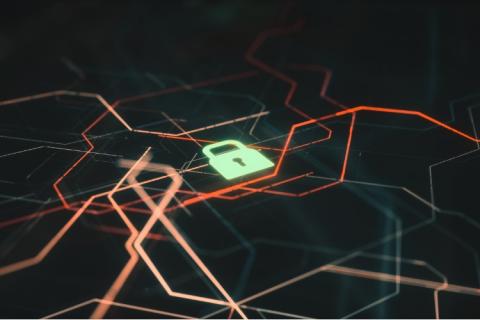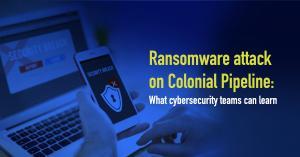Security | Threat Detection | Cyberattacks | DevSecOps | Compliance
Latest News
Phishing in New Waters: Exploiting Live Chat to Deliver Malware
Phishing schemes are always evolving. This past year, email thread hijacking took phishing to new depths of subterfuge as criminals hid in plain sight within existing conversations. But no matter how well cybercriminals have refined their messaging or counterfeited legitimate logos and branding, the one constant has always been their delivery method: email. Until now. Online chat services have become a new target for cybercriminals to introduce documents loaded with malware into organizations.
Darkside RaaS in Linux version
AT&T Alien Labs recently analyzed the Linux version of the Darkside ransomware, one of the most active ransomware in the last quarter. Shortly after hitting Colonial Pipeline, Darkside developers announced they would be closing operations.
The Colonial Pipeline ransomware attack: Lessons for cybersecurity teams
The recent ransomware attack on Colonial Pipeline is reportedly one of the most significant cyberattacks on the energy sector till date, and it has overwhelmed cybersecurity experts across the globe.
Ransomware prevention begins with securing your applications
Ransomware prevention measures such as securing your applications can help you avoid becoming the next target. Ransomware isn’t a new problem—not even close. It’s been around for more than 30 years. But like every element of technology, it has evolved. Instead of being an occasional expensive nuisance, it’s now a plague with existential implications for critical infrastructure—energy, transportation, food supply, water and sewer services, healthcare, and more.
Malware hosting domain Cyberium fanning out Mirai variants
AT&T Alien Labs has observed the Mirai variant botnet, known as Moobot, scanning for known but uncommon vulnerabilities in Tenda routers, resulting in a considerable peak in our internal telemetry. The research associated with this peak resulted in the discovery of a malware hosting domain, providing several different Mirai variants, like Moobot and Satori.
Ransomware is the biggest threat, says GCHQ cybersecurity chief
The head of the UK’s National Cyber Security Centre has warned that ransomware has become the biggest threat to British people and businesses. In a speech being given today by Lindy Cameron, chief executive of the NCSC, to the RUSI think tank, she highlights the need for ransomware problem to be taken seriously, and warns of the “cumulative effect” if society fails to properly deal with the rising threat.
JBS Ransomware Attack Started in March and Much Larger in Scope than Previously Identified
SecurityScorecard also found that 1 in 5 of the world’s food processing, production, and distribution companies rated have a known vulnerability in their exposed Internet assets
EO, EO, It's Off to Work We Go! (Protecting Against the Threat of Ransomware with Splunk)
On June 2nd, 2021, the White House released a memo from Anne Neuberger, Deputy Assistant to the President and Deputy National Security Advisor for Cyber and Emerging Technology. The subject? “What We Urge You To Do To Protect Against The Threat of Ransomware.” It outlines several recommendations on how to protect your organization from ransomware. The memo was a follow-up to President Biden’s May 12th Executive Order on Improving the Nation’s Cybersecurity Order (EO14028).
Ransomware and Energy and Utilities
The exponential growth of IoT devices in the energy and utilities industry has greatly increased focus on cybersecurity. Focus on cybersecurity across industries has increased recently, no doubt due to factors like COVID-19 forcing a jump in remote work. In 2020, we saw cybersecurity move from being a technical problem to a business issue.









